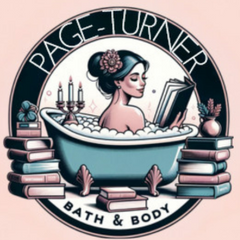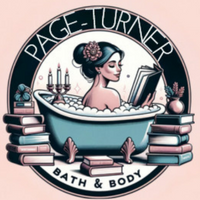Alice in Wonderland: Navigating the Absurd Book Review
"Alice's Adventures in Wonderland" by Lewis Carroll, first published in 1865, is a testament to the extraordinary power of imagination and the endless possibilities of the literary world. This review, aims to delve deeply into the various facets of this iconic work, exploring its thematic complexity, narrative structure, character development, and lasting impact on literature and culture.
At its core, Alice's Adventures in Wonderland is a vibrant, whimsical, and sometimes perplexing journey that defies the conventions of traditional storytelling. It is a novel that invites readers, regardless of age, to plunge into a world where logic is turned upside down, and the impossible seems entirely probable.
Narrative Structure and Style
Lewis Carroll, a pseudonym for Charles Lutwidge Dodgson, a mathematician at Christ Church, Oxford, crafts a narrative that is both linear and labyrinthine. The story follows young Alice as she falls down a rabbit hole into a fantastical world. The structure of the novel is episodic, with Alice moving from one bizarre encounter to another, each meeting introducing new characters and scenarios that challenge her perception of the world.
Carroll's writing style is a blend of Victorian eloquence and playful absurdity. He employs linguistic gymnastics throughout the novel, playing with puns, nonsensical poems, and riddles that contribute to the dream-like quality of Alice's adventures. The narrative voice is both omniscient and intimate, allowing the reader to see the world through Alice's eyes while also understanding the absurdities that she cannot.
Might also want to read Decoding Lewis Carroll: Symbolism and Mathematics in Alice’s Adventures.
Thematic Exploration
"Alice's Adventures in Wonderland" is rich in themes that transcend its apparent whimsy. One of the most prominent themes is the exploration of identity and the process of growing up. Alice's constant physical transformations mirror the psychological and emotional changes of adolescence. Her fluctuating size and shape serve as metaphors for the confusion and inconsistency of childhood, as she tries to navigate a world that seems to make little sense.
Another significant theme is the critique of established norms and authority. Wonderland, as a realm of chaos and rule-breaking, stands in stark contrast to the rigid and structured Victorian society. The arbitrary rules and nonsensical justice system in Wonderland parody the complexities of real-world law and governance.
For more information Alice in Wonderland's Victorian England: Reflections of an Era.
Characterization
The characters in "Alice's Adventures in Wonderland" are some of the most memorable and imaginative in literary history. Alice, the protagonist, is a curious, intelligent, and somewhat precocious child whose reactions to the absurdities of Wonderland range from bemusement to frustration. Her logical approach to the illogical world highlights the innocence and rationality of childhood.
The other characters, including the White Rabbit, the Cheshire Cat, the Mad Hatter, and the Queen of Hearts, are embodiments of various aspects of the human psyche and societal archetypes. The Cheshire Cat, with its enigmatic and philosophical statements, represents the elusive nature of truth and reality. The Queen of Hearts, with her impulsive and tyrannical behavior, symbolizes the dangers of unchecked power and authority.
Literary Techniques and Symbolism
Carroll's use of symbolism is both subtle and complex. The rabbit hole itself is a symbol of adventure and the unknown, a gateway to a world that defies the conventions of the ordinary. The various potions and cakes that cause Alice to shrink and grow are symbolic of the transformative nature of experience and knowledge.
One of the most striking literary techniques employed by Carroll is his use of logic and paradox. Despite the apparent nonsense, there is an underlying logic to Wonderland that challenges conventional reasoning. This use of paradox serves to engage the reader in a deeper contemplation of reality and perception.
The Underlying Logic
The underlying logic in "Alice's Adventures in Wonderland" by Lewis Carroll is a complex and multifaceted aspect of the novel, requiring a deep dive into its narrative structure, thematic elements, and the author's unique perspective. This logic, while often wrapped in absurdity and whimsy, follows its own set of rules and principles, offering a profound commentary on reality, perception, and understanding.
Logic as a Play on Language and Reason
-
Linguistic Logic: Carroll, a mathematician and a logician, plays extensively with language in the novel. The dialogues often involve puns, paradoxes, and nonsensical statements that, upon closer examination, reveal an internal consistency. For instance, the Mad Hatter's riddle "Why is a raven like a writing desk?" appears illogical but invites the reader to explore unconventional connections and meanings, illustrating the flexible nature of language and logic.
-
Rule-Based Absurdity: Wonderland operates on a set of rules that, while bizarre to Alice (and the reader), are consistent within its world. Characters like the Queen of Hearts, who shouts “Off with his head!” or the Caucus Race, where everyone wins and all must have prizes, demonstrate this unique set of rules. This reflects a logical system that, although different from the real world, is internally coherent in the context of Wonderland.
Thematic Logic: Reflecting Real-World Paradoxes
-
Childhood Logic vs. Adult Rules: Alice’s perspective as a child brings a unique form of logic that often conflicts with the adult world's nonsensical rules. Her straightforward questions and observations, such as questioning the Queen’s arbitrary judgment, represent a childlike sense of fairness and logic that contrasts with the irrationality of adult authority figures.
-
Social and Political Satire: Carroll uses Wonderland to satirize the illogical nature of certain social and political practices of Victorian England. The nonsensical trial over the stolen tarts, for instance, mocks the complexities and absurdities of the legal system.
Philosophical and Psychological Logic
-
Dream Logic: The narrative follows the logic of a dream, where events do not adhere to real-world physics or rationale. This dream logic reflects the workings of the subconscious mind, where the impossible becomes possible, and normal rules of time, space, and behavior are suspended.
-
Existential Queries: The novel explores deep philosophical questions under the guise of simple conversations. Alice’s constant questioning of her identity – “Who in the world am I?” – and her interactions with characters like the Cheshire Cat delve into existential concepts of self, reality, and existence.
You might like to read Alice in Wonderland's Heroine Explored.
Carroll's Mathematical Logic
-
Symbolic Logic and Mathematics: As a mathematician, Carroll embeds elements of symbolic logic and mathematical principles into the story. The book plays with concepts of size, proportion, and infinity, often challenging conventional mathematical logic but remaining true to its own set of mathematical rules.
-
Paradox and Counterintuitive Reasoning: The novel is filled with paradoxes that challenge the reader's understanding of logic. These paradoxes reflect Carroll's fascination with the limitations and possibilities of logical reasoning, encouraging readers to think beyond the apparent absurdity.
Cultural and Literary Impact
"Alice's Adventures in Wonderland" has had a profound impact on literature and popular culture. Its influence can be seen in a wide range of artistic expressions, from visual arts to cinema, and has inspired countless adaptations and reinterpretations. The novel has also contributed significantly to the genre of children's literature, challenging the notion of what children's books can be and do.
The characters and phrases from the novel have permeated popular culture and language, with terms like "down the rabbit hole" and "Mad as a Hatter" becoming part of everyday vernacular. The novel's exploration of dream logic and the subconscious has been a source of inspiration for psychoanalytic theory and has influenced various artistic movements, particularly surrealism.
In conclusion, "Alice's Adventures in Wonderland" is not just a literary classic; it's a source of boundless inspiration, particularly for our unique Alice in Wonderland Collection of bath salts, sugar scrubs, and sweaters. At Page-Turner Bath & Body, we've meticulously crafted this collection to encapsulate the essence of Carroll's fantastical world.
Each product is an olfactory and tactile journey into Wonderland, mirroring the whimsy, color, and wonder that Alice experiences. Imagine soaking in bath salts that swirl with the excitement of the Mad Hatter's tea party, or exfoliating with a sugar scrub that carries the enigmatic allure of the Cheshire Cat. Our sweater, cozy and comfortable,is designed to envelop you in the warmth of Wonderland, serving as a comforting embrace on your own adventures. This collection is our tribute to Carroll's masterpiece - a way to physically immerse yourself in the narrative and carry a piece of Wonderland with you, long after the book is closed.


Leave a comment